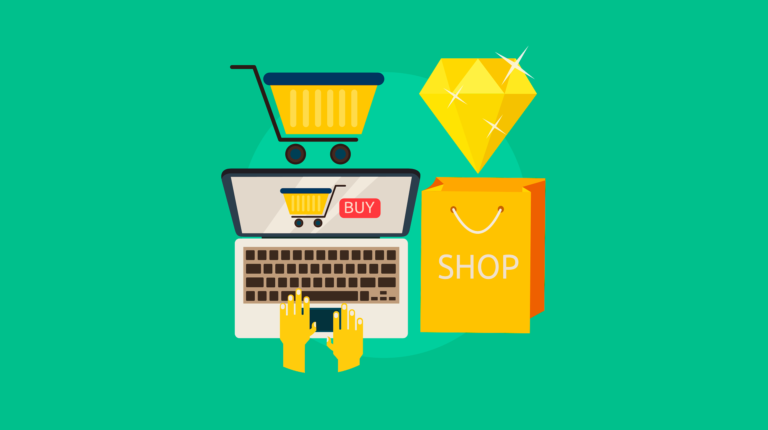Table of Contents
Social media is similar to that one friend who knows everyone but talks a lot. Additionally, it can expose your e-commerce store to thousands, if not millions, of potential customers if used properly. Let’s face it, though: simply sharing a random product image with the hashtag #BuyNow won’t do. Strategy, ingenuity, and perhaps a little bit of luck are required.
Let’s now discuss the top social media tactics that will increase your online sales rather than just garner you likes from your best friend and mother.

Be Aware of Your Audience (Really, Don’t Ignore This Section)
Consider attempting to market high-end coffee to a tea-only consumer. Doesn’t that sound like a waste of work? Because of this, understanding your social media audience is crucial. Determine your ideal client’s age, hobbies, purchasing patterns, and even the memes that make them laugh before you start posting.
Use tools like Facebook Insights and Instagram Analytics, or just ask your customers directly (sounds crazy, doesn’t it?). You can create content that speaks to your audience instead of shouting at them if you know who they are.
Create Eye-Catching Content
People look through social media faster than a kid running to the ice cream truck. If your post doesn’t make them stop, they’re gone.
Use captivating videos, attention-grabbing photos, and catchy captions. For the sake of efficient marketing, please also avoid using boring stock photos that scream, “I didn’t try.” Showcase how your goods are put to use, how they meet a need, or how they enhance people’s lives.
Don’t forget to include humor if you can. Consumers adore brands that don’t take themselves too seriously. Have you ever looked at Wendy’s Twitter account? Unadulterated gold.)
Use Influencer Marketing (Because Trust Is Important)
Let’s be honest: consumers have greater faith in influencers than in brands. Working with the right influencers can help you gain the trust of their followers for your product.
Hiring A-list celebrities doesn’t have to be expensive. Micro-influencers, or those with 10,000–50,000 followers, can help you achieve better outcomes because they frequently have more engaged audiences. Just make sure they genuinely enjoy your product and are in line with your brand. A forced sponsorship that shouts, “I got paid to say this,” is the worst thing ever.

Don’t just sell; engage.
That friend who only calls when they need a favor is disliked by everyone. People will start to ignore you if your brand only posts about sales and discounts.
Instead, experiment! Post behind-the-scenes videos, pose queries, conduct surveys, and reply to comments with humanity. Customers are more inclined to purchase from a brand when they identify with it.
Make use of reels and stories (because algorithms adore them).
You’re missing out if you don’t use Facebook Stories, Instagram, or TikTok Reels. Social media algorithms favor these brief, interesting formats, which increases brand awareness.
Present brief product demonstrations, client endorsements, or even a “day in the life” of your company. Additionally, don’t be scared to follow trends as long as they align with your brand; don’t force a dance challenge unless it makes sense.
Run advertisements, but do it wisely.
While organic reach is fantastic, paid advertisements are highly favored by social media platforms. The good news? If you target the right audience, even a modest budget can make a big difference.
Run retargeting advertisements for visitors to your website who left empty-handed (we see you, cart abandoners). To display several products at once, use carousel ads. Additionally, since guessing isn’t a strategy, A/B test various creatives to determine which ones perform best.
Promote user-generated content, also known as free marketing.
It’s like free advertising when customers post about your product. Promote this by holding competitions, showcasing client testimonials, or simply asking satisfied customers to share their experiences.
Just saying, “Tag us in your photos for a chance to be featured!” can have a big impact. People adore it when brands share their posts; it’s like getting a little celebrity moment.
Make purchasing simple (since no one enjoys taking extra steps).
Let’s say you come across a product on Instagram that you adore, but you have to search for it on their website, add it to your cart, and then complete five steps at the checkout. Isn’t that annoying?
For this reason, you should make the purchasing process as simple as you can. Make use of Facebook Shops, Instagram Shopping, and Pinterest Buyable Pins to enable customers to make purchases straight from social media without having to go through additional steps.
Examine and Make Adjustments (Because Speculation Is Overrated)
There is no one-size-fits-all approach to social media. What suits one brand may not suit yours. Checking analytics is therefore essential.
Keep tabs on the most popular posts, the peak hours of your audience, and the kinds of content that generate real conversions—not just likes. Utilize this information to adjust your approach and focus more on what is effective.
Social media is ultimately about fostering relationships rather than just increasing sales. People will remember you and pick you over the competition when the time comes to make a purchase if you are reliable, offer value, and make them laugh a little.
So go ahead and share that amazing content, interact with your readers, and see how many e-commerce sales you generate. What if everything else fails? At least you’ll be able to show off some amusing memes.





